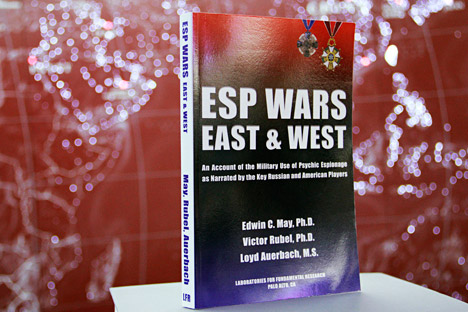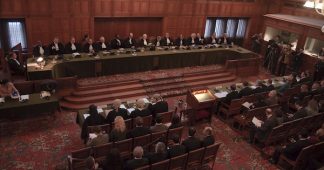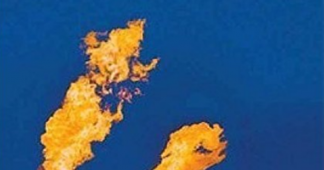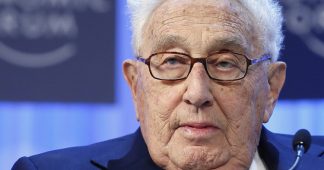“Sabra and Shatila: September 1982” Bayan Nuwayhed Al-Hout, 2004, Pluto Press, London and Ann Arbor, MI, 462 pp., 36 photographjs, 5 maps
Book Review published in the Holy Land Studies Journal, Spring 2005
By Mazin Qumsiyeh
It would be correct but rather reductionist to state that this remarkable book is the most comprehensive and thorough documentation of the events of the massacres at Sabra and Shatila. The mark of a good book is that it leaves the reader changed and this volume does that. Upon first hearing about this book, my first and incorrect inclination was that perhaps I do not need to read it. Many of us Palestinians assume we know the suffering of our people over the past six decades, we have seen it and we have lived it. This thought quickly evaporated after flipping through the first few pages of this book and then it was hard to put it down.
It is appropriate that this edition came out in English after its initial publication in Arabic. Knowingly or unknowingly, many in the Western world lend their name and their tax money to support atrocities like the Sabra and Shatila massacre. Would it help those taxpayers see what is being done with their tax money and US diplomatic support? Would it help bring people to a better understanding of the “situation”? More importantly would it bring us closer to see the victims of this particular massacre as people and not mere numbers? Having lived in the US for many years I wanted to look at this English version from that perspective. I also wanted to compare it to other books that relate personal testimonies of survivors of atrocities.
Those murdered in Sabra and Shatila are not around to tell us their stories so we are left with the survivors, those relatives and friends and acquaintances who witnessed the event and/or came to pick the bodies and the pieces of their shattered lives. Telling their stories is not easy. A writer or editor of such a compilation has the heavy responsibility (and duty) to his or her subjects to let them tell the story with as little interference as possible. It is not easy to craft careful and neutral questions that allow for free and open answers. It is also not easy to select from all your interviews individual accounts to include in a readable book. It is not easy to research names then cross check all references and resources to ensure presenting a picture that is as close as possible to the reality of what happened. All this and more are achieved in this book.
The first part of this book consists of six chapters that relay the statements and testimonies of the families and witnesses. The first two chapters cover the place and time and events leading up to the massacre including the encirclement of the camps by the Israeli army. Chapters 3-5 cover chronologically the events of September 16-18; the horrific 40-hour period in which nearly 2000 men, women, and children were systematically massacred or abducted and “disappeared”. Chapter 6 covers testimonies covering the search for victims following the massacre. Forty-six actual testimonies were selected and included in these six chapters out of total direct testimonies gathered on 430 victims (about half Palestinian, 28% Lebanese, and the remainder belonging to other nationalities).
The second part of this book summarizes the research (including field study) conducted by the author into the massacre. Chapter 7 reviews results of the detailed field study conducted in 1984.
Chapter 8 analyzes the issue of the number of victims killed. The chilling method used by Israeli governments to minimize the casualties (in the Kahan report) is analyzed in detail. In one part, the author recounts what the historian Toynbee once said in debate with Yaacov Herzog in 1961. Hetzog lashed out at Toynbee for mentioning the Nazi atrocities in talking about the massacre of Palestinians in Deir Yassin in 1948. Herzogs contention was that the deaths of a few hundred Palestinians could never be even discussed in relation to the horror on Nazi atrocities. Toynbees answer was that “Every increase in numbers produces an increase in suffering but it is impossible to be wicked or criminal more than 100%.” She ten explained how the wickedness of trying to obfuscate reality or minimize the numbers of victims (as happened in the Israeli Kahan report). There are lessons to be learned from that. Yet, the most astonishing fact is that no authority (Israeli, Lebanese, or Palestinian) took it upon itself to compile a list of the victims. As such, the list compiled by this author must remain the most complete such list to date.
There are four appendices to the work. Appendix 1 contains 28 tables related to the field study. Appendix 2 provides the most comprehensive listing of names of those known killed (906 names) or abducted and missing (484 names). Given that only a handful of the missing were ever found, over 1300 human beings lost their lives with this tragedy.
The book ends with a series of remarkable photographs. Most are ones I have never seen before and I am sure other readers will find equally transforming. Most books place such photos in the Middle of the book or close to the beginning. A photograph it is said is worth a thousand words. But a photograph can elicit all sorts of emotions that then detract from the importance of reading the text itself. In this case, the placement of the photos at the end was the right decision and I urge readers to read this text in the order it is presented. For me, this was particularly powerful. I, as a reader was able to read the testimonies and review the facts and figures taking time to draw the relevant lessons learned before I saw at the end a series of pictures of what the scene of the crime looked like. To me the most remarkable and damning evidence of Israeli culpability and the accompanying lies about the massacre are found on pages 304-317 and buttressed by pictures and maps of the Israeli command center overseeing the camp. Anyone examining this evidence and International law understands the culpability of the Israeli politicians, commanders and soldiers. They knew the camps were undefended, they knew that massacres would be committed by the 150 Phallange militias they invited in, they knew the bloody outcome would happen, and finally they watched without interfering as this unfolded over three days.
I never met the author, Dr. Bayan Nuwayah Al-Hout, a faculty member at the Lebanese University for the past 25 years. I can only marvel at the amount of efforts over two decades that such a project demanded. It is usually something done by well-financed teams with a cadre of paid staff. For the author to have done this with very limited resources and help is truly admirable.
It was once said that the sign of a good book is that when you close the last page it is like saying goodbye to a dear friend. Well in this case, it is like saying goodbye to hundreds of friends: those who died in that tragic massacre and those who survived to recount the stories and live their lives awaiting justice. If we are to honor them all then we must engage in the quest for peace with justice.
When in a few years, a museum is built for the Nakba (catastrophe) that befell the Palestinian people, it will have a prominent place in it for Sabra and Shatila. This book will be the key resource for this. Those who care for human rights should buy it, read it, and learn the lessons from it.
There is a section at the end of the book, not given a chapter status and seeming as orphaned as the Children of Sabra and Shatila, that is simply titled “Conclusion: who was responsible.” For those looking for the simplified answers of assigning blame to just one person or party, they will be disappointed. For those who want to use the lessons learned from this tragedy to prevent future tragedy, the careful analysis here is a must reading. From the Lebanese militia, to the local Israeli commanders guarding the camps, to Ariel Sharon who gave the go ahead, to the Lebanese government, all share some of the guilt. But ultimately, all of us who heard the news and who took no action are responsible for the continuation of a string of atrocities against civilians. On page 324, the author quotes from the song lyrics of the Argentinean singer Alberto Cortez:
“Where was the sun when anger burst at Sabra and Shatila? Where was I? At what party, careless, when I red the news? And where were you you so eager to defend the oppressed when the massacre happened? Where is the pride of men? Where were you my friend with the sleeping conscience?..”
The road between the atrocities of Sabra and Shatila runs rather short to those of Jenin, Nablus and Rafah of today and to our suppressed humanity. Such books can be our tour guides.
Mazin Qumsiyeh, PhD, is author of “Sharing the Land of Canaan: Human Rights and the Israeli-Palestinian Struggle” http://qumsiyeh.org











